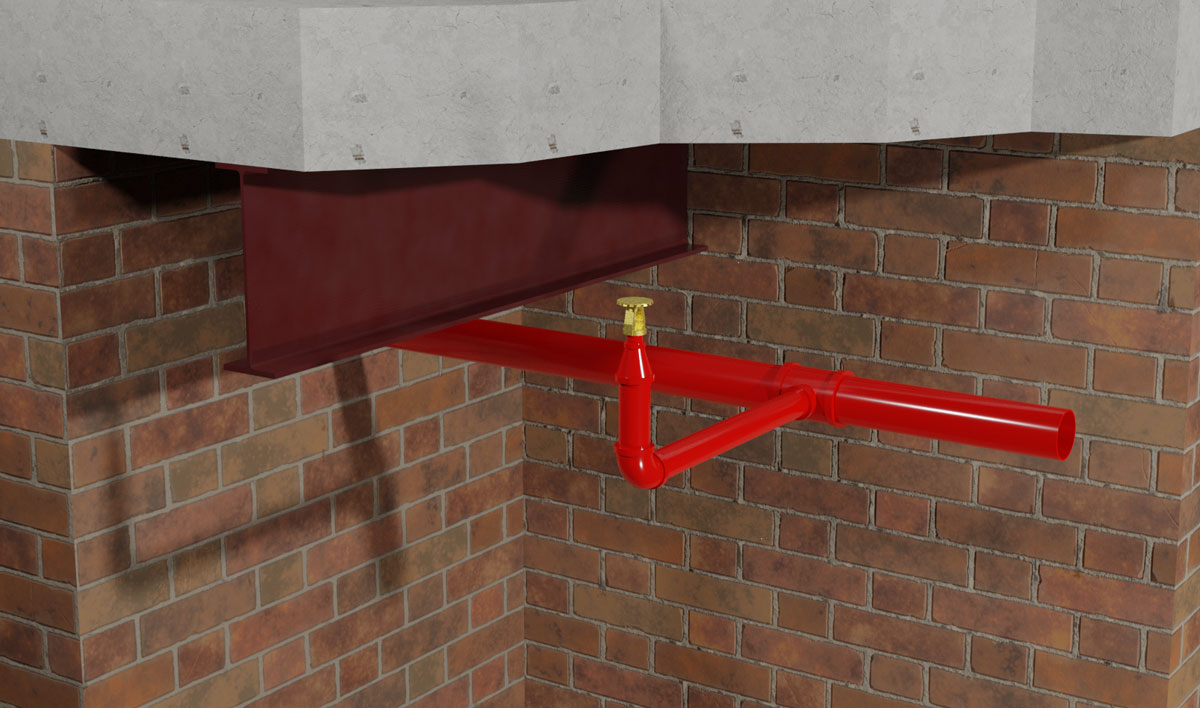An automatic fire sprinkler is used to control or extinguish fires locally through the discharging of water in the location. Detection of the fire is usually done through the use of heat-sensitive elements, constructed from glass bulbs containing oil-based liquids or soldered links. There is also a thermal element which holds a plug which prevents the water from flowing into the sprinkler head in place, but which responds to heat by releasing the plug allowing the water to flow.
Key facts about fire sprinklers
- Fire sprinklers usually only operate in the area where the fire is present, and will not affect adjacent areas
- Discharge in the absence of fire is rare, but there is a 99.8% chance of discharge in the presence of fire (meaning they are very reliable)
- The design complexity (and therefore cost) of fire sprinklers tend to increase with the amount of fire risk they have to deal with. So, lower risk areas such as offices will have a lower water demand compared to a higher risk area such as a warehouse
- Fire sprinkler systems can be designed so as to disguise pipes and you can also choose decorative sprinkler heads to match the interior of your space (if you so desire)
Automatic sprinkler system design
Automatic sprinkler systems consist of two main parts:
- Water supply – tank, pump and valve
- Sprinkler installation – pipes and heads
The exact specification of your fire sprinkler design will depend mostly on the hazard classification of the building you wish to install it in. Fire sprinkler design specifications may include:
- Assumed area of maximum operation
- Design density (water discharge)
- Head spacing dimensions
- Tank volume
- Water supply period
Key things to keep in mind when considering automatic sprinkler system design are:
- The maximum area of coverage per sprinkler head – depends on hazard classification and sprinkler mounting orientation (overhead or sidewall)
- Water discharge in litres per minute over the assumed area of maximum operation – this will increase in proportion to the occupancy risk category
- Area of operation which is the maximum area the fire sprinkler will operate in a fire, and taking into account the nature of the fire risk and the recognition that some fires will grow faster than others.
- Water supplies need to be capable of supplying the required flow for a minimum duration that varies from 30 to 90 minutes
- Minimum water volume requirement dependent on the hazard classification and system type
Automatic fire sprinkler system designs can be adapted to suit a specific fire safety objective and are typically installed throughout a building.
Here at The CAD Room, we have recently introduced fire protection services based on our many years of working closely with fire sprinkler contractors on various MEP projects. If you would like to find out more about our services, please get in touch by phone or email.

